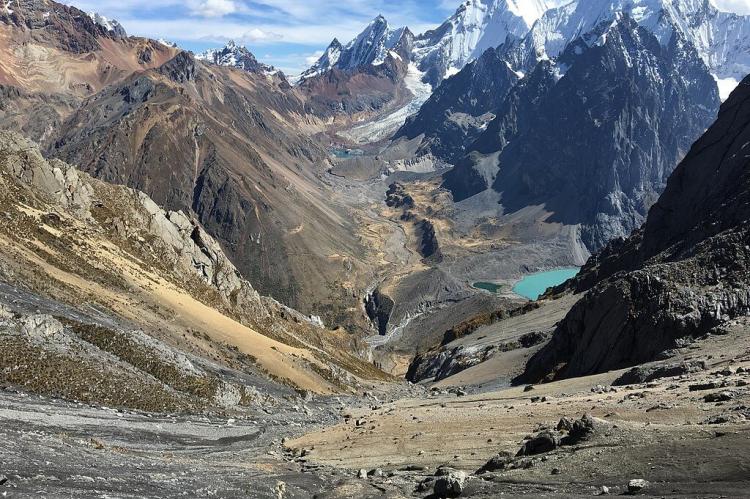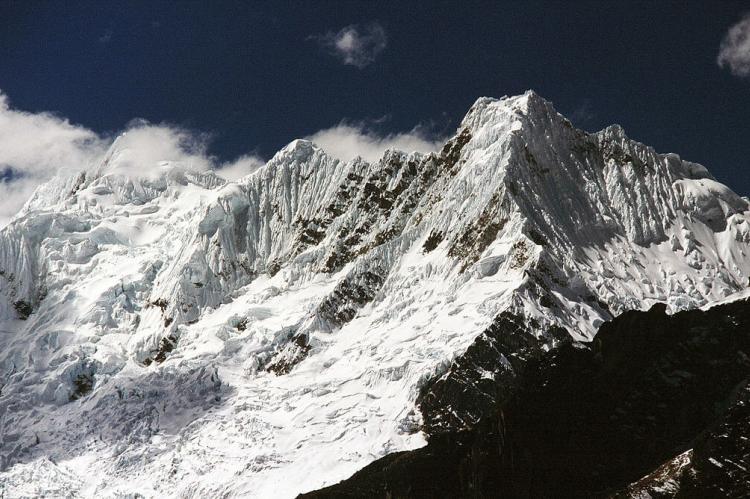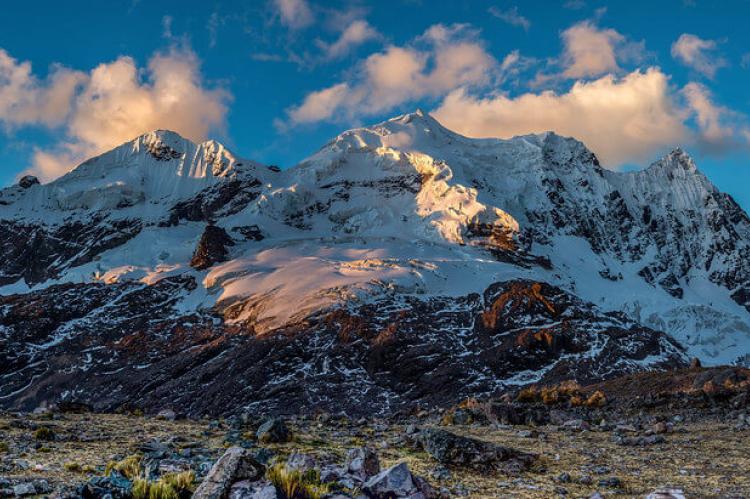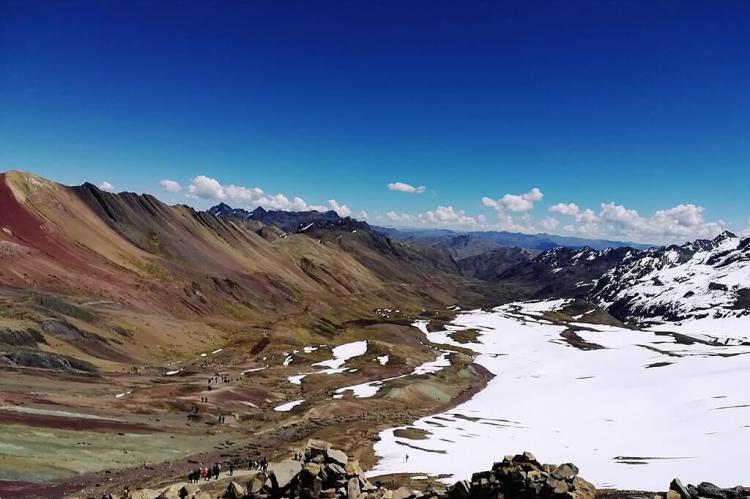Mountain Ranges and Major Peaks of Peru
Peru hosts a diverse and awe-inspiring array of mountain ranges that form part of the larger Andes mountain range. These ranges stretch from north to south, shaping the country's topography and providing a home to unique ecosystems and cultural heritage.
Mountain Ranges and Major Peaks of Peru
Peru hosts a diverse and awe-inspiring array of mountain ranges that form part of the more extensive Andes mountain range. These ranges stretch from north to south, shaping the country's topography and providing a home to unique ecosystems and cultural heritage. The Andes Mountains, which run through the country, are the most extended mountain range in the world and contain many of Peru's highest peaks.
The following are the major mountain ranges in Peru, each contributing to the country's stunning geography and offering opportunities for exploration, trekking, and admiring the natural beauty of the Andes.
Andes Mountains
The Andes run through the western part of Peru from north to south. This iconic range defines the country's geography and offers diverse landscapes, including towering peaks, deep valleys, and high-altitude plateaus. The Peruvian Andes are divided into three main subranges.
-
Cordillera Occidental (Western Andes): The Western Cordillera, also known as the Cordillera Occidental, is located on the western side of the Andes in Peru. It runs parallel to the Pacific Ocean and is characterized by its rugged terrain, deep valleys, and dramatic peaks. This subrange is predominantly volcanic in origin and is known for its numerous volcanoes, some of which are still active. The highest peak in this subrange is Mount Huascarán, standing at an impressive elevation of 6,768 m (22,205 ft), making it the tallest mountain in Peru.
-
Cordillera Central: The Central Cordillera, or Cordillera Central, is between the Western Cordillera and the Eastern Cordillera. It is the narrowest of the three subranges but is no less impressive regarding its landscapes and biodiversity. Deep canyons, fast-flowing rivers, and glacial lakes characterize this subrange. This subrange is home to several iconic mountains, including Mount Huayna Picchu and Mount Salkantay, both popular trekking destinations. The region is also known for the Sacred Valley of the Incas, which houses ancient Inca ruins, including the world-renowned Machu Picchu.
-
Cordillera Oriental (Eastern Andes): The Eastern Cordillera, also known as the Cordillera Oriental, is located on the eastern side of the Andes in Peru. It runs parallel to the Amazon Basin and is characterized by its lush cloud forests, deep river valleys, and diverse ecosystems. The Cordillera Oriental is the wettest of the three subranges, receiving high yearly rainfall. The region is vital for its rich biodiversity and is home to Manú National Park, a UNESCO World Heritage site and one of the most biodiverse areas in the world.
Major Peaks of the Peruvian Andes:
-
Alpamayo, 5,947 m (19,511 ft)
-
Artesonraju, 6,025 m (19,767 ft)
-
Carnicero, 5,960 m (19,554 ft)
-
Chumpe, 6,106 m (20,033 ft)
-
Coropuna, 6,377 m (20,922 ft)
-
El Misti, 5,822 m (19,101 ft)
-
El Toro, 5,830 m (19,127 ft)
-
Huandoy, 6,395 m (20,981 ft)
-
Huascarán, 6,768 m (22,205 ft)
-
Jirishanca, 6,094 m (19,993 ft)
-
Pumasillo, 5,991 m (19,656 ft)
-
Rasac, 6,040 m (19,816 ft)
-
Rondoy, 5,870 m (19,259 ft)
-
Sarapo, 6,127 m (20,102 ft)
-
Salcantay, 6,271 m (20,574 ft)
-
Seria Norte, 5,860 m (19,226 ft)
-
Siula Grande, 6,344 m (20,814 ft)
-
Huaytapallana, 5,557 m (18,232 ft)
-
Yerupaja, 6,635 m (21,768 ft)
-
Yerupaja Chico, 6,089 m (19,977 ft)
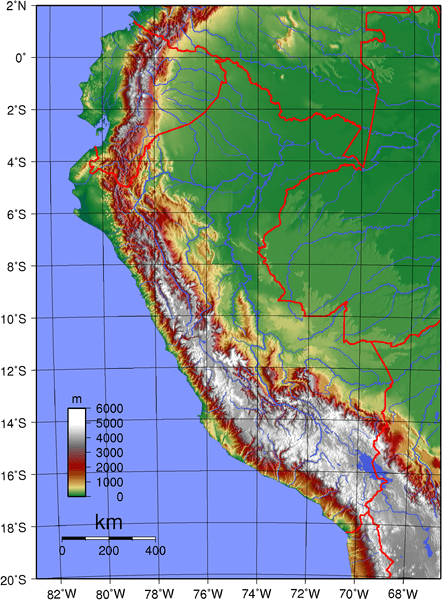
Topographic map of Peru.
Other Mountain Ranges
-
Cordillera Negra: The Cordillera Negra is a mountain range located in the Ancash Region of Peru. It is part of the more extensive Andes mountain range. It is situated on the western side of the Callejón de Huaylas, a long valley between the Cordillera Blanca to the east and the Pacific Ocean to the west. The absence of extensive glaciers in this range contributes to its dark appearance.
-
Cordillera Blanca: The Cordillera Blanca is a subrange of the Andes located in northern Peru. Stretching for about 200 km (125 mi) from north to south, it is renowned for its snow-capped peaks and glacial lakes. The Huascarán National Park, a UNESCO World Heritage Site, protects much of this mountainous region.
-
Cordillera Huayhuash: The Cordillera Huayhuash is located south of the Cordillera Blanca in central Peru. This relatively small range stretches for about 30 km (18.6 mi) from north to south. It is renowned for its dramatic landscapes and challenging peaks, making it a mecca for adventurous mountaineers and trekkers.
-
Cordillera Vilcabamba: The Cordillera Vilcabamba is situated in the southern part of Peru and is home to several significant archaeological sites, including Machu Picchu. The region is known for its lush cloud forests and dramatic landscapes, providing a backdrop for many of Peru's historical and cultural treasures.
-
Cordillera de Vilcanota: The Cordillera de Vilcanota is a subrange of the Andes located in southeastern Peru. It is known for its glacial landscapes, high-altitude peaks, and rich cultural history.
-
Cordillera de Vilcabamba: The Cordillera de Vilcabamba is located in southern Peru, near the border with Bolivia. It is a subrange of the more extensive Andes range known for its stunning landscapes, historical significance, and diverse ecosystems.
-
Cordillera del Huallaga: The Cordillera del Huallaga is a smaller mountain range located in northern Peru, near the border with Ecuador. It is known for its dense rainforests, cloud-covered peaks, and essential role in the region's hydrology.
-
Cordillera del Cóndor: The Cordillera del Cóndor is located in northeastern Peru, near the border with Ecuador. Running north-south, it is about 150 km (93 mi) long and reaches a maximum elevation of 2,900 m (9,500 ft). Rugged mountains and dense rainforests characterize this range.
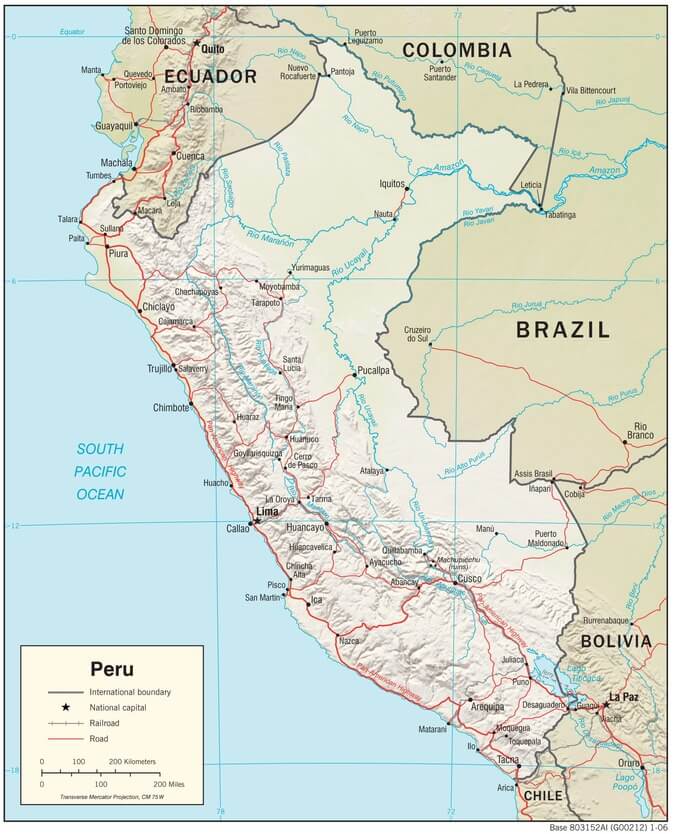
Peru physiographic map.
